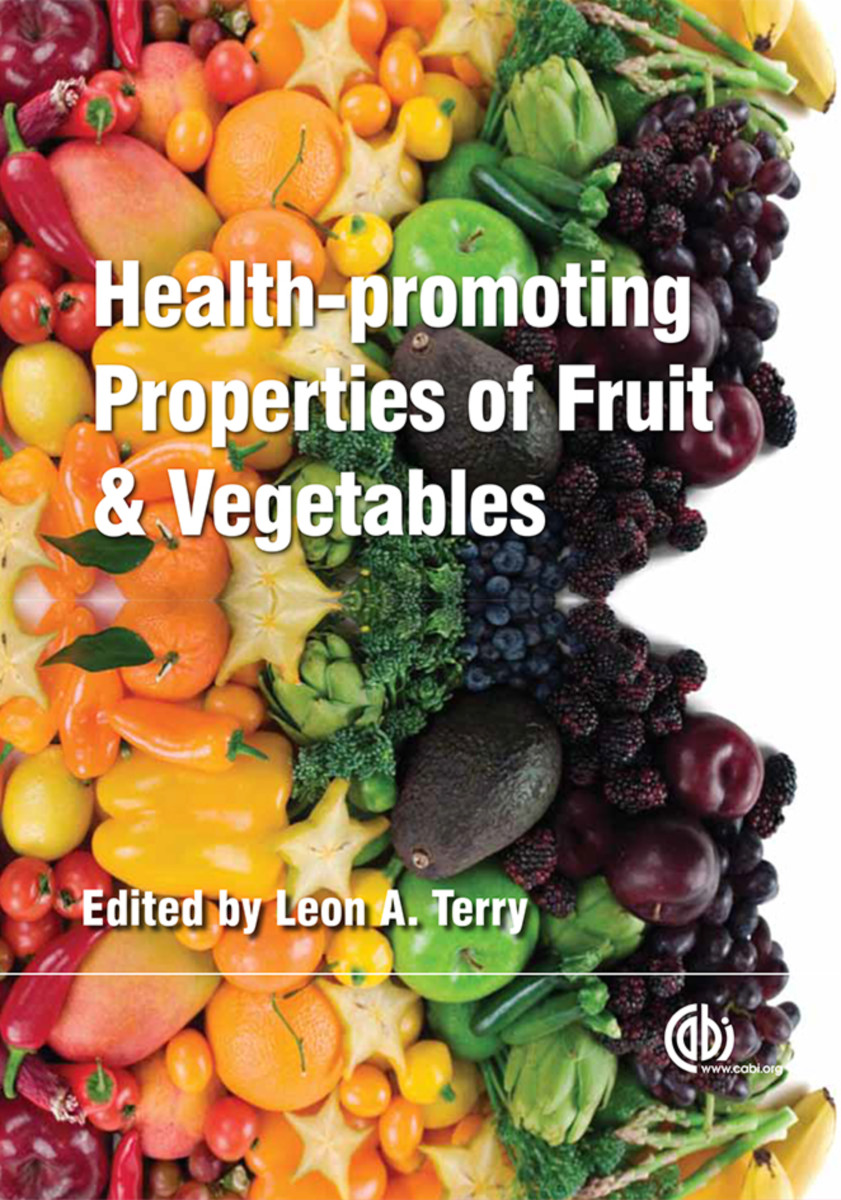Health-Promoting Properties of Fruit and Vegetables
- Publisher
CABI - Published
6th February 2014 - ISBN 9781780644226
- Language English
- Pages 432 pp.
- Size 6.75" x 9.5"
- Publisher
CABI - Published
16th November 2011 - ISBN 9781845935283
- Language English
- Pages 432 pp.
- Size 6.75" x 9.5"
Fruits and vegetables are one of the richest sources of ascorbic acid, other antioxidants and produce specific bioactive compounds. A general consensus from health experts has confirmed that an increased dietary intake of specific bioactive compounds found in some fresh produce types may protect against oxidative damage and reduce the incidence of certain cancers and chronic diseases.
This book collectively discusses and reviews empirical data on health-promoting properties of major fresh produce types. It provides detailed information on identity, nature, bioavailablity, chemopreventative effects and postharvest stability of specific chemical classes with known bioactive properties. In addition, chapters discuss the various methodologies for extraction, isolation, characterization and quantification of bioactive compounds and the in vitro and in vivo anticancer assays.
"Terry has compiled a collection of new literature reviews, authored by researchers in the field, on the health effects of various fruits and vegetables. The volume is divided into 19 chapterse, beginning with an introductory chaper providing an overview of the subject. The next 16 chapers cover a wide array of fruits and vegetables, including avocados, berries, citrus fruits, root vegetables, leafy vegetables, Brassicae, and more. The extensively referenced chaters consider pre- and postharvest effects, including methods of cooking when studied, research related to specific diseases, and further studies needed. The authors are careful to cite negative as well as positive research. The final two chapters focus on methodolgies for evaluating bioactive compounds. A variety of tables and charts support the text. This is an excellent review of current research on these foods. Summing Up: Highly Recommended."
- Choice
1. Introduction
2. Alliums
3. Avocado
4. Blueberry and Cranberry
5. Brassicas
6. Citrus
7. Cucurbits
8. Exotics
9. Grape
10. Leafy Vegetables and Salads
11. Pome Fruit
12. Potato and Other Root Crops
13. Prunus
14. Ribes and Rubus
15. Strawberry
16. Tomato and Other Solanaceous Fruits
17. Tropical Fruit
18. Methodologies for Extraction, Isolation, Characterization and Quantification of Bioactive Compounds
19. Methodologies for Evaluating In Vitro and In Vivo Activities of Bioactive Compounds
Leon Terry
Leon Terry is Head of the Plant Science Laboratory at Cranfield University and heads Food Security and Environmental Health within Cranfield Health, with responsibility over all staff and students in the area. His main research interests are fundamental postharvest physiology and biochemistry of fresh produce, postharvest pathology and disorders, chemometric and textural profiling for interpretation of chemical data, shelf-life and vase-life extension and quality evaluation and sensor and product development (including packaging).


